Dec
18
2017
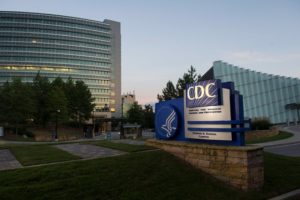 I received a flood of e-mails over the weekend pointing me to reports that the CDC is banned from using seven words or phrases in their upcoming budget proposals. They are not George Carlin’s famous “seven dirty words” you can never say on television. Rather they are: “vulnerable,” “entitlement,” “diversity,” “transgender,” “fetus,” “evidence-based” and “science-based,” according to the Washington Post, who broke the story.
I received a flood of e-mails over the weekend pointing me to reports that the CDC is banned from using seven words or phrases in their upcoming budget proposals. They are not George Carlin’s famous “seven dirty words” you can never say on television. Rather they are: “vulnerable,” “entitlement,” “diversity,” “transgender,” “fetus,” “evidence-based” and “science-based,” according to the Washington Post, who broke the story.
First let’s discuss the status of these reports – they are not official public statements from the Centers for Disease Control (CDC), the HHS (department of Health and Human Services) or the Trump Administration. They are anonymous reports from CDC officials who were present during a meeting in which the seven unwanted terms were discussed. Apparently this report was confirmed with several people who were present.
CDC Director Brenda Fitzgerald has pushed back against these reports without straight-up denying them.
“I want to assure you there are no banned words at CDC. We will continue to talk about all our important public health programs,” CDC said in a Facebook post. “I want to assure you that CDC remains committed to our public health mission as a science- and evidence-based institution. As part of our commitment to provide for the common defense of the country against health threats, science is and will remain the foundation of our work.”
Meanwhile the HHS stated the reports were a “mischaracterization.”
Continue Reading »
Sep
13
2010
We can add one more study to the pile of evidence showing no association between exposure to thimerosal (a mercury-based vaccine preservative) and autism. The article: Prenatal and Infant Exposure to Thimerosal From Vaccines and Immunoglobulins and Risk of Autism, is published in the latest issue of Pediatrics, and shows no association between prenatal and infant exposure to thimerosal and three forms of autism – autism, autism spectrum disorder, and regressive autism.
No one study can ever be definitive, but now we have a large body of evidence from multiple studies showing a lack of association between thimerosal and autism. This won’t stop the dedicated anti-vaccinationists and mercury militia from continuing their anti-vaccine propaganda, but hopefully it will further reassure those who actually care about the science.
Background
This has been a long and complex story, so let me review some of the background. Diagnosis rates of ASD have been climbing for the last 20 years, prompting some to search for an environmental cause. The existing anti-vaccine community, not surprisingly, blamed vaccines. This was given a tremendous boost by the now-discredited study by Andrew Wakefield concerning MMR (which never contained thimerosal) and autism. When the evidence was going against MMR as a cause, attention turned to thimerosal in some vaccines. This notion was popularized by journalist David Kirby in his book, Evidence of Harm.
Continue Reading »
Nov
16
2023
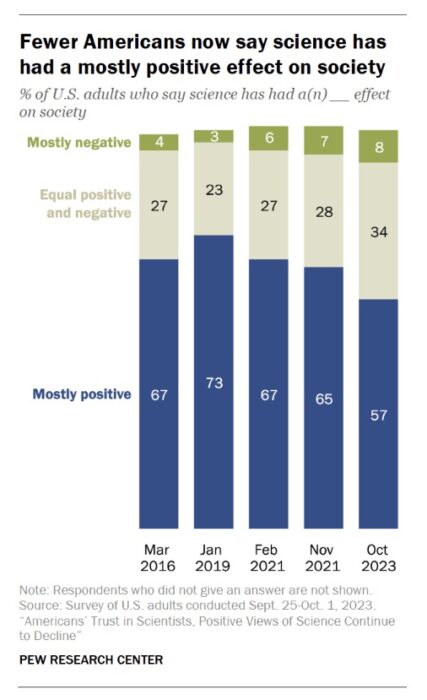 How much does the public trust in science and scientists? Well, there’s some good news and some bad news. Let’s start with the bad news – a recent Pew survey finds that trust in scientist has been in decline for the last few years. From its recent peak in 2019, those who answered that science has a mostly positive effect on society decreased from 73% to 57%. Those who say it has a mostly negative effect increased from 3 to 8%. Those who trust in scientists a fair amount or a great deal decreased from 86 to 73%. Those who think that scientific investments are worthwhile remain strong at 78%.
How much does the public trust in science and scientists? Well, there’s some good news and some bad news. Let’s start with the bad news – a recent Pew survey finds that trust in scientist has been in decline for the last few years. From its recent peak in 2019, those who answered that science has a mostly positive effect on society decreased from 73% to 57%. Those who say it has a mostly negative effect increased from 3 to 8%. Those who trust in scientists a fair amount or a great deal decreased from 86 to 73%. Those who think that scientific investments are worthwhile remain strong at 78%.
The good news is that these numbers are relatively high compared to other institutions and professions. Science and scientists still remain among the most respected professions, behind the military, teachers, and medical doctors, and way above journalists, clergy, business executives, and lawyers. So overall a majority of Americans feel that science and scientists are trustworthy, valuable, and a worthwhile investment.
But we need to pay attention to early warning signs that this respect may be in jeopardy. If we get to the point that a majority of the public do not feel that investment in research is worthwhile, or that the findings of science can be trusted, that is a recipe for disaster. In the modern world, such a society is likely not sustainable, certainly not as a stable democracy and economic leader. It’s worthwhile, therefore, to dig deeper on what might be behind the recent dip in numbers.
It’s worth pointing out some caveats. Surveys are always tricky, and the results depend heavily on how questions are asked. For example, if you ask people if they trust “doctors” in the abstract the number is typically lower than if you ask them if they trust their doctor. People tend to separate their personal experience from what they think is going on generally in society, and are perhaps too willing to dismiss their own evidence as “exceptions”. If they were favoring data over personal anecdote, that would be fine. But they are often favoring rumor, fearmongering, and sensationalism. Surveys like this, therefore, often reflect the public mood, rather than deeply held beliefs.
Continue Reading »
Oct
09
2023
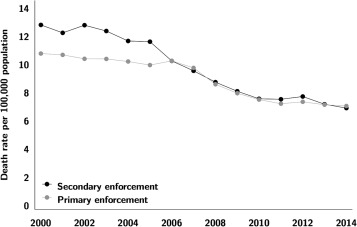 In Part I of this post I outlined some basic considerations in deciding how much the state should impose regulations on people and institutions in order to engineer positive outcomes. In the end the best approach, it seems to me, is a balanced one, where we consider the burden of regulations, both individually and cumulatively, compared to the benefit to individuals and society. We also need to consider unintended consequences and perverse incentives – people still need to feel as if they have individual responsibility, for example. It is a complex balancing act. In the end we should use objective evidence to determine what works and what doesn’t, or at least to be clear-eyed about the tradeoffs. In the US we have the benefit of fifty states which can experiment with various regulations, and this can potentially generate a lot of data.
In Part I of this post I outlined some basic considerations in deciding how much the state should impose regulations on people and institutions in order to engineer positive outcomes. In the end the best approach, it seems to me, is a balanced one, where we consider the burden of regulations, both individually and cumulatively, compared to the benefit to individuals and society. We also need to consider unintended consequences and perverse incentives – people still need to feel as if they have individual responsibility, for example. It is a complex balancing act. In the end we should use objective evidence to determine what works and what doesn’t, or at least to be clear-eyed about the tradeoffs. In the US we have the benefit of fifty states which can experiment with various regulations, and this can potentially generate a lot of data.
Let’s take a look first at cigarette smoking regulations and health outcomes. At this point I don’t think I have to spend too much time establishing that smoking has negative health consequences. They have been well-documented in the last century and are not controversial, so we can take that as an established premise. Given that we know smoking is extremely unhealthy, which measures are justified by government in trying to limit smoking? Interestingly, the answer until around the 1980s was – very little. Surgeon General warnings was about it. Smoking in public was accepted (I caught the tail end of smoking in hospitals).
This was always curious to me. Here we have a product which is known to harm and even kill those who use the product as directed. And it’s addictive, which compromises the autonomy of users. It is interesting to think what would happen if a company tried to introduce tobacco smoking as a product today. I doubt it would get past the FDA. But obviously smoking was culturally established before its harmful effects were generally known. I also always thought that the experience of prohibition created a general reluctance to go down that road again. But then data started coming out about the effects of second-hand smoke, and suddenly the calculus shifted. Now we were not just dealing with the interest of the state in protecting citizens from their own behavior, but the state protecting citizens from the choices of other citizens. This is entirely different – you may have a right to slowly kill yourself, but not to slowly kill me. The result was lots of data about smoking regulations.
Continue Reading »
Sep
11
2023
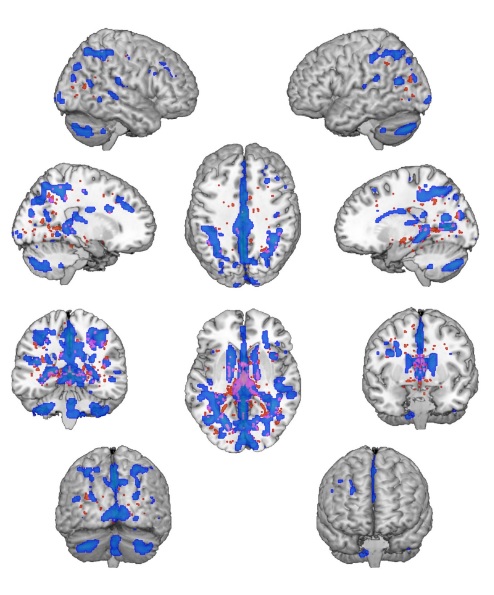 I will acknowledge up front that I never drink, ever. The concept of deliberately consuming a known poison to impair the functioning of your brain never appealed to me. Also, I am a bit of a supertaster, and the taste of alcohol to me is horrible – it overwhelms any other potential flavors in the drink. But I am also not judgmental. I understand that most people who consume alcohol do so in moderation without demonstrable ill effects. I also know I am in the minority when it comes to taste.
I will acknowledge up front that I never drink, ever. The concept of deliberately consuming a known poison to impair the functioning of your brain never appealed to me. Also, I am a bit of a supertaster, and the taste of alcohol to me is horrible – it overwhelms any other potential flavors in the drink. But I am also not judgmental. I understand that most people who consume alcohol do so in moderation without demonstrable ill effects. I also know I am in the minority when it comes to taste.
But we do need to recognize that alcohol, like many other substances of abuse like cocaine, has the ability to be addictive, and can result in alcohol use disorder. Excessive alcohol use costs the US economy $249 billion per year from health care costs, lost productivity, traffic accidents, and criminal justice system costs. It dwarfs all other addictive substances combined. It is also well established that long term, excessive alcohol use reduces cognitive function.
Recent research has explored the question of exactly what the effects of addictive substances are on the brain with chronic use. One of the primary effects appears to be on cognitive flexibility. In general terms this neurological function is exactly what it sounds like – flexibility in thinking and behavior. But researchers always need a way to operationalize such concepts – how do we measure it? There are two basic ways to operationalize cognitive flexibility – set shifting and task switching. Set shifting involves change the rules of how to accomplish a task, while task switching involves changes to a different task altogether.
For example, a task switching test might involve sorting objects that are of different shapes, colors, textures, and sizes. First subjects may be told to sort by colors, but also they are to respond to a specific cue (such as a light going on) by switching to sorting by shape. The test is – how quickly and effectively can a subject switch tasks like this? How many sorting mistakes will they make after switching tasks? Set shifting, on the other hand, changes the rules rather than the task – push the button every time the red light comes on, vs the green light.
Continue Reading »
Sep
05
2023
 Do birds of a feather flock together, or do opposites attract? These are both common aphorisms, which means that they are commonly offered as generally accepted truths, but also that they may by wrong. People like pithy phrases, so they spread prolifically, but that does not mean they contain any truth. Further, our natural instincts are not adequate to properly address whether they are true or not.
Do birds of a feather flock together, or do opposites attract? These are both common aphorisms, which means that they are commonly offered as generally accepted truths, but also that they may by wrong. People like pithy phrases, so they spread prolifically, but that does not mean they contain any truth. Further, our natural instincts are not adequate to properly address whether they are true or not.
Often people will resort to the “availability heuristic” when confronted with these types of claims. If they can readily think of an example that seems to support the claim, then they accept it as probably true. We use the availability of an example as a proxy for data, but it’s a very bad proxy. What we really need to address such questions is often statistics, something which is not very intuitive for most people.
Of course, that’s where science comes in. Science is a formal system we use to supplement our intuition, to come to more reliable conclusions about the nature of reality. Recently researchers published a very large review of data, a meta-analysis, combined with a new data analysis to address this very question. First, we need operationalize the question, to put it in a form that is precise and amenable to objective data. If we look at couples, how similar or different are they? To get even more precise, we need to identify specific traits that can be measured or quantified in some way and compare them.
Continue Reading »
Mar
25
2022
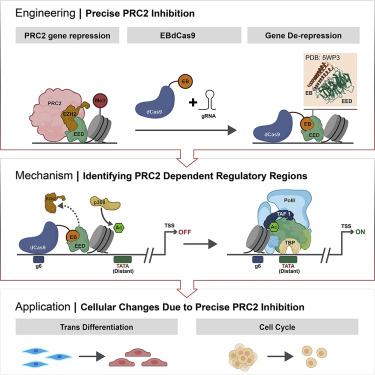 Last year I wrote about CRISPR On-Off – this is a system for using the genetic modification tool, CRISPR, in order to turn the expression of a gene off and then back on again, without altering the gene itself. Now researchers have published a similar application of CRISPR, using a different mechanism to turn on the expression of silenced genes. Their technique shows the power of CRISPR as a modifiable platform. The research also used AI to design the new system, again showing how artificial intelligence is being used to dramatically speed up the pace of research.
Last year I wrote about CRISPR On-Off – this is a system for using the genetic modification tool, CRISPR, in order to turn the expression of a gene off and then back on again, without altering the gene itself. Now researchers have published a similar application of CRISPR, using a different mechanism to turn on the expression of silenced genes. Their technique shows the power of CRISPR as a modifiable platform. The research also used AI to design the new system, again showing how artificial intelligence is being used to dramatically speed up the pace of research.
The new technique also uses CRISPR (Clustered regularly interspaced short palindromic repeats), which was derived from bacteria that use it as part of their immunity against viruses. CRISPR is like a carrier, which can be attached to a specific stretch of DNA. It will then find that stretch of DNA within a genome and target it. CRISPR can also be attached to a variety of proteins, most famously CAS9, which can then perform some function when it gets to its target. CAS9 is a DNA splicer, so a CRISPR-CAS9 system can target a desired stretch of DNA and splice it. This can be used to disrupt a gene, or it can be used to create a location for the insertion of a new gene or gene modification, which requires a separate process involving the DNA repair mechanism.
The CRISPR system dramatically reduced the cost and time necessary to make alterations to a genome. The technology is also rapidly progressing, because research using CRISPR is now available to many more labs and researchers. There are other payloads other than CAS9 that can be used, for example. Researchers are also learning how to tweak the speed vs accuracy of CRISPR.
Continue Reading »
Jan
27
2022
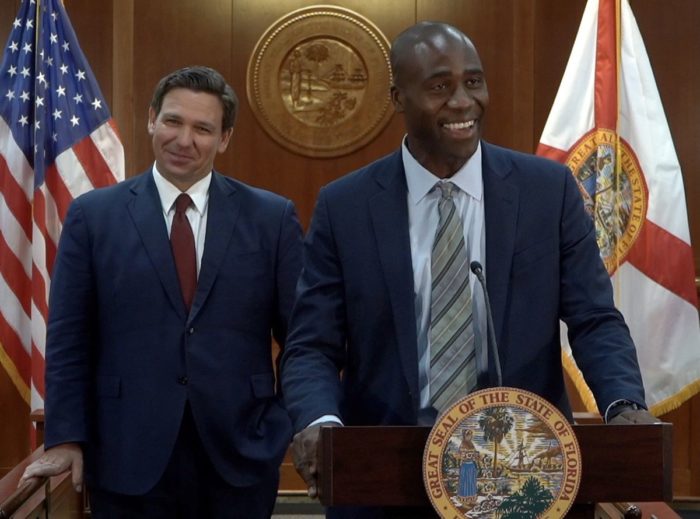 The Twitterverse is outraged, appropriately, it turns out, that Florida Acting Surgeon General Joseph Ladapo, who is undergoing confirmation hearings, refused to state when asked directly four times, that the COVID vaccines are safe and effective. At first he straight-up dodged the question, saying, “The question is a scientific one.” Uh, yeah, and you’re an MD, PhD with a degree in public health (i.e. a medical scientist) so answer the question. When pushed repeatedly he finally did answer that the vaccines have:
The Twitterverse is outraged, appropriately, it turns out, that Florida Acting Surgeon General Joseph Ladapo, who is undergoing confirmation hearings, refused to state when asked directly four times, that the COVID vaccines are safe and effective. At first he straight-up dodged the question, saying, “The question is a scientific one.” Uh, yeah, and you’re an MD, PhD with a degree in public health (i.e. a medical scientist) so answer the question. When pushed repeatedly he finally did answer that the vaccines have:
“reasonable effectiveness for the prevention of hospitalization and death” and “relatively low effectiveness for prevention” against transmission over time.
This is not accurate. They have extremely high effectiveness at preventing hospitalization and death. The risk of dying from COVID is 53 times greater for those who are unvaccinated vs those who are fully boosted. Regarding prevention of transmission, Ladapo is narrowly correct but misleading through selective reporting. Studies show that a fully vaccinated person has a relative risk of 0.32 of passing on the virus compared to an unvaccinated person (so an unvaccinated person who gets COVID is 3 times more likely to pass it on). This is not “low effectiveness”, but the same data does also show that this protection wanes over time, and is mostly gone three months after the second shot. However, this is for vaccinated but not boosted individuals. Other studies show that boosted individuals have a 93% relative reduction in their risk of contracting COVID (even Delta), either symptomatic or asymptomatic, and of course people who never catch the virus cannot pass it on.
Continue Reading »
Dec
16
2021
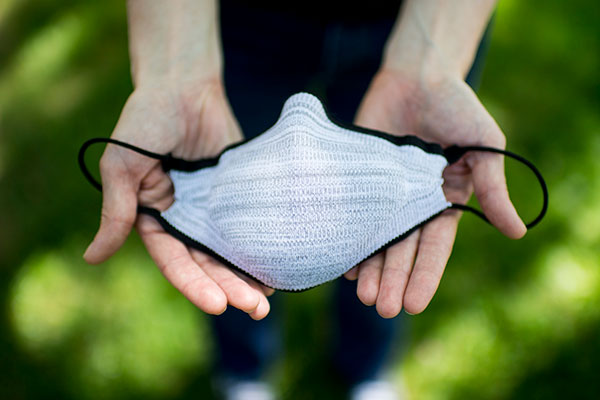 The COVID-19 pandemic is not done with us yet. We are still in the middle of the delta surge, and while delta will eventually pass, the omicron variant is right on its heels. In the US we just passed the milestone of 800,000 people dead from COVID with over 50 million cases. More Americans died of COVID in 2021 than in 2020, although in 2021 most deaths were among the unvaccinated. The vaccines remain our best defense against this pandemic, which is why it is tragic that there are still holdouts for tribal or ideological reasons. Regardless, it is extremely likely that we will be dealing with COVID through 2022. It is also likely that COVID is now endemic, and while it may fade down to flu-like proportions, we will also very likely have to deal with it for years to come. COVID is also likely not the last respiratory pandemic we will have to deal with this century.
The COVID-19 pandemic is not done with us yet. We are still in the middle of the delta surge, and while delta will eventually pass, the omicron variant is right on its heels. In the US we just passed the milestone of 800,000 people dead from COVID with over 50 million cases. More Americans died of COVID in 2021 than in 2020, although in 2021 most deaths were among the unvaccinated. The vaccines remain our best defense against this pandemic, which is why it is tragic that there are still holdouts for tribal or ideological reasons. Regardless, it is extremely likely that we will be dealing with COVID through 2022. It is also likely that COVID is now endemic, and while it may fade down to flu-like proportions, we will also very likely have to deal with it for years to come. COVID is also likely not the last respiratory pandemic we will have to deal with this century.
All of this is why masks are still important. We just have to accept the fact that face masks are now an important part of life. At least for the foreseeable future we will need face masks as a layer of protection in health care settings, large indoor crowds, among vulnerable populations, and for anyone who is symptomatic. Walking around in the public maskless, sneezing and coughing from a “cold” is no longer socially acceptable. If you want to avoid the mask in small or outdoor crowds and in gatherings of family and friends, then get fully vaccinated. But even then, there are some situations where masks provide an extra needed layer of protection.
There are at least two important questions relating to mask wearing. The first is – do they really work? The short answer is yes, they do. But obviously there is some complexity here. When worn properly, and in the right setting, masks provide a measurable level of protection from a respiratory infection. They protect you and they protect others. The latest evidence to support this conclusion looked at countries with and without face mask policies. They found:
Average COVID-19 mortality per million was 288.54 in countries without face mask policies and 48.40 in countries with face mask policies.
Continue Reading »
Aug
20
2021
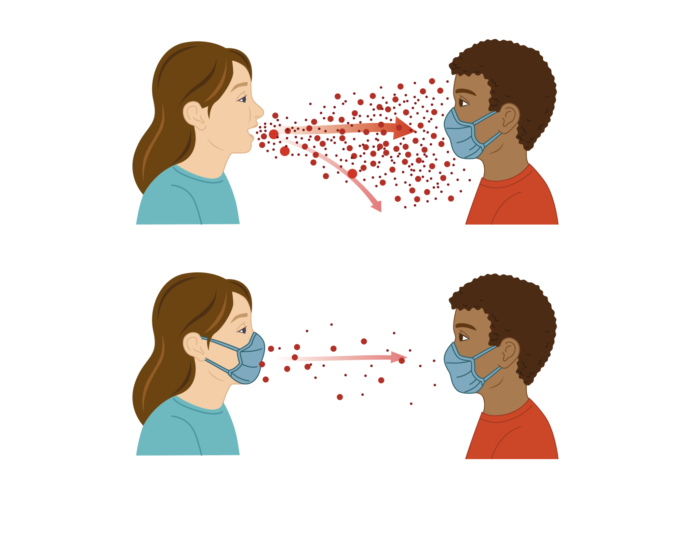 By coincidence, in November 2019 I did an investigation into the question – does wearing a facemask reduce the risk of transmitting or getting a respiratory infection? I was in Australia at the time and noticed that their large Asian population frequently wore facemasks in public. It seemed odd, and my initial hypothesis was that this was likely a cultural behavior without supporting evidence. I was surprised to find, when I reviewed the primary literature at the time, that I was wrong. In fact, masks do work, in certain circumstances.
By coincidence, in November 2019 I did an investigation into the question – does wearing a facemask reduce the risk of transmitting or getting a respiratory infection? I was in Australia at the time and noticed that their large Asian population frequently wore facemasks in public. It seemed odd, and my initial hypothesis was that this was likely a cultural behavior without supporting evidence. I was surprised to find, when I reviewed the primary literature at the time, that I was wrong. In fact, masks do work, in certain circumstances.
The basic concept is simple – when you breath, talk, cough, or sneeze you exhale tiny droplets, and if you have a viral respiratory illness those droplets are crawling with virus. Masks reduce the spread of those droplets, and otherwise you are basically spraying everyone with a shower of viruses. They are less effective at protecting the wearer, but they do reduce the risk of getting sick as well. However, that reduction is only statistically detectable if you are in a high-risk situation to begin with. This includes being in the same room with someone who is sick, or being in a crowd during an epidemic. Out in the general population not during an epidemic the baseline risk of catching a virus is low, and so there is no statistically detectable benefit from wearing a mask.
This conclusion was based on information available before anyone ever heard the word “Covid-19”. Who would have thought at the time that this entirely scientific question would become so political so fast? The efficacy of mask wearing suddenly became a very important question, so now we have much more research, and some specific to SARS-CoV-2. This research has raised our confidence that masks do, in fact, have efficacy (science-speak for “they work”), but has also drilled down to greater detail. Where does the research stand now?
Continue Reading »
 I received a flood of e-mails over the weekend pointing me to reports that the CDC is banned from using seven words or phrases in their upcoming budget proposals. They are not George Carlin’s famous “seven dirty words” you can never say on television. Rather they are: “vulnerable,” “entitlement,” “diversity,” “transgender,” “fetus,” “evidence-based” and “science-based,” according to the Washington Post, who broke the story.
I received a flood of e-mails over the weekend pointing me to reports that the CDC is banned from using seven words or phrases in their upcoming budget proposals. They are not George Carlin’s famous “seven dirty words” you can never say on television. Rather they are: “vulnerable,” “entitlement,” “diversity,” “transgender,” “fetus,” “evidence-based” and “science-based,” according to the Washington Post, who broke the story.
 How much does the public trust in science and scientists? Well, there’s some good news and some bad news. Let’s start with the bad news –
How much does the public trust in science and scientists? Well, there’s some good news and some bad news. Let’s start with the bad news – In
In  I will acknowledge up front that I never drink, ever. The concept of deliberately consuming a known poison to impair the functioning of your brain never appealed to me. Also, I am a bit of a
I will acknowledge up front that I never drink, ever. The concept of deliberately consuming a known poison to impair the functioning of your brain never appealed to me. Also, I am a bit of a  Do birds of a feather flock together, or do opposites attract? These are both common aphorisms, which means that they are commonly offered as generally accepted truths, but also that they may by wrong. People like pithy phrases, so they spread prolifically, but that does not mean they contain any truth. Further, our natural instincts are not adequate to properly address whether they are true or not.
Do birds of a feather flock together, or do opposites attract? These are both common aphorisms, which means that they are commonly offered as generally accepted truths, but also that they may by wrong. People like pithy phrases, so they spread prolifically, but that does not mean they contain any truth. Further, our natural instincts are not adequate to properly address whether they are true or not. Last year
Last year  The
The  The COVID-19 pandemic is not done with us yet. We are still in the middle of the delta surge, and while delta will eventually pass, the omicron variant is right on its heels.
The COVID-19 pandemic is not done with us yet. We are still in the middle of the delta surge, and while delta will eventually pass, the omicron variant is right on its heels.  By coincidence,
By coincidence, 




